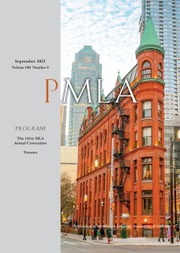No CrossRef data available.
Article contents
Unfairing the Fair: Sexuality and the Affective Epistemology of Race in Shakespeare's Sonnets
Published online by Cambridge University Press: 17 October 2024
Abstract
Whereas previous criticism of Shakespeare's Sonnets has shown how the early sonnets associate the fairness of an elite young man with the dynastic legitimacy and aesthetic refinement that would come to signify the superiority of racial whiteness, this essay considers certain later sonnets that compromise and threaten to revoke whiteness as a mark of racial privilege. Darkening the friend's complexion, these poems—numbers 27–28, 33–35, 43, 58, 93, and 119–20—materialize him as a nocturnal shadow; stain his lovely face with black clouds, smoke, mud, wrinkles, and ink; and associate his sexual estrangement from the speaker with the torments of blackest hell. By darkening the promiscuous aristocratic friend, these later sonnets suggest that racial fairness is not simply an ontological fact—a stable epidermal sign of aristocratic lineage—but a fluctuating sign contingent on interpersonal value judgments, or an “affective epistemology.”
- Type
- Essay
- Information
- Copyright
- Copyright © 2024 The Author(s). Published by Cambridge University Press on behalf of Modern Language Association of America


